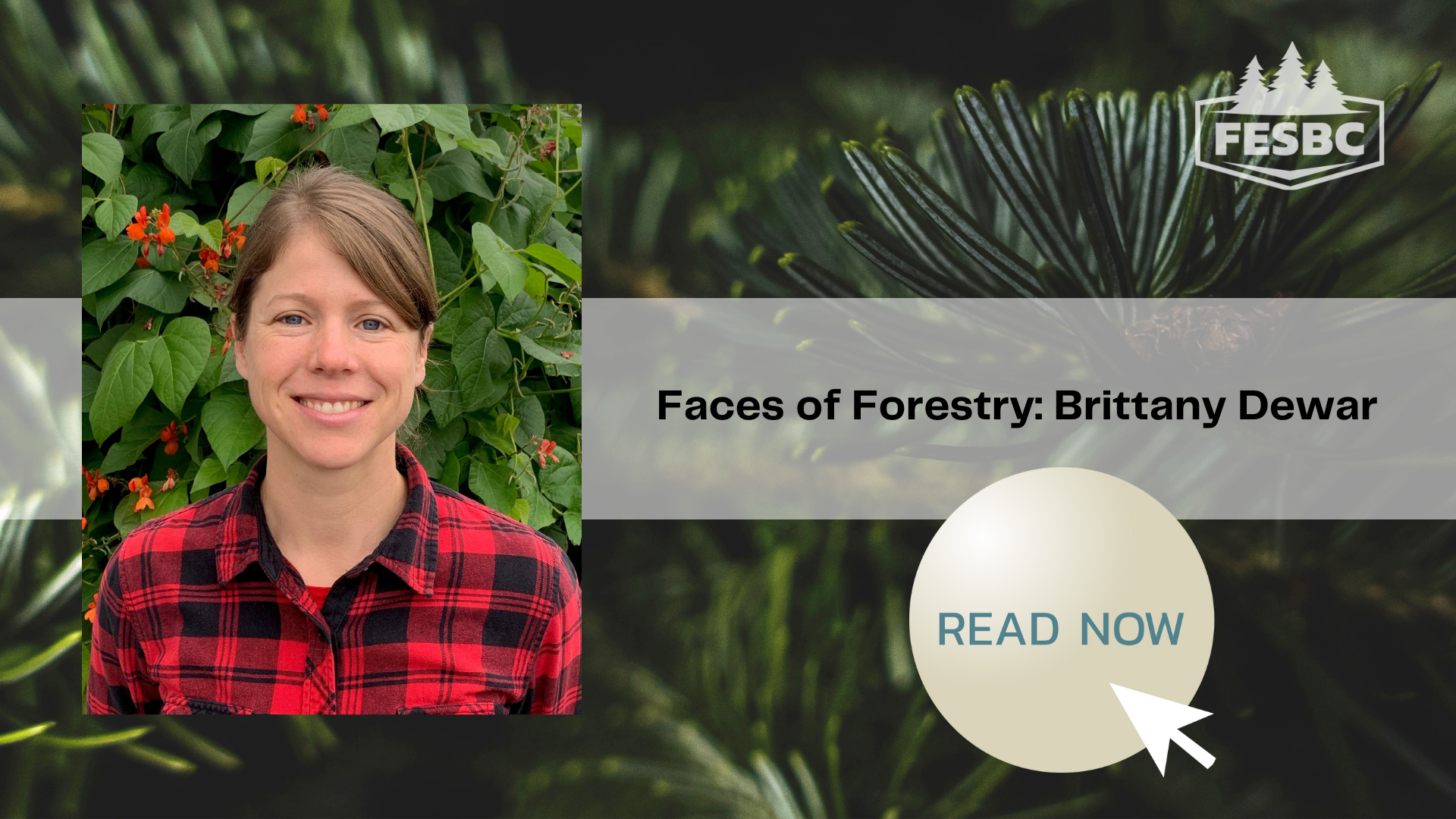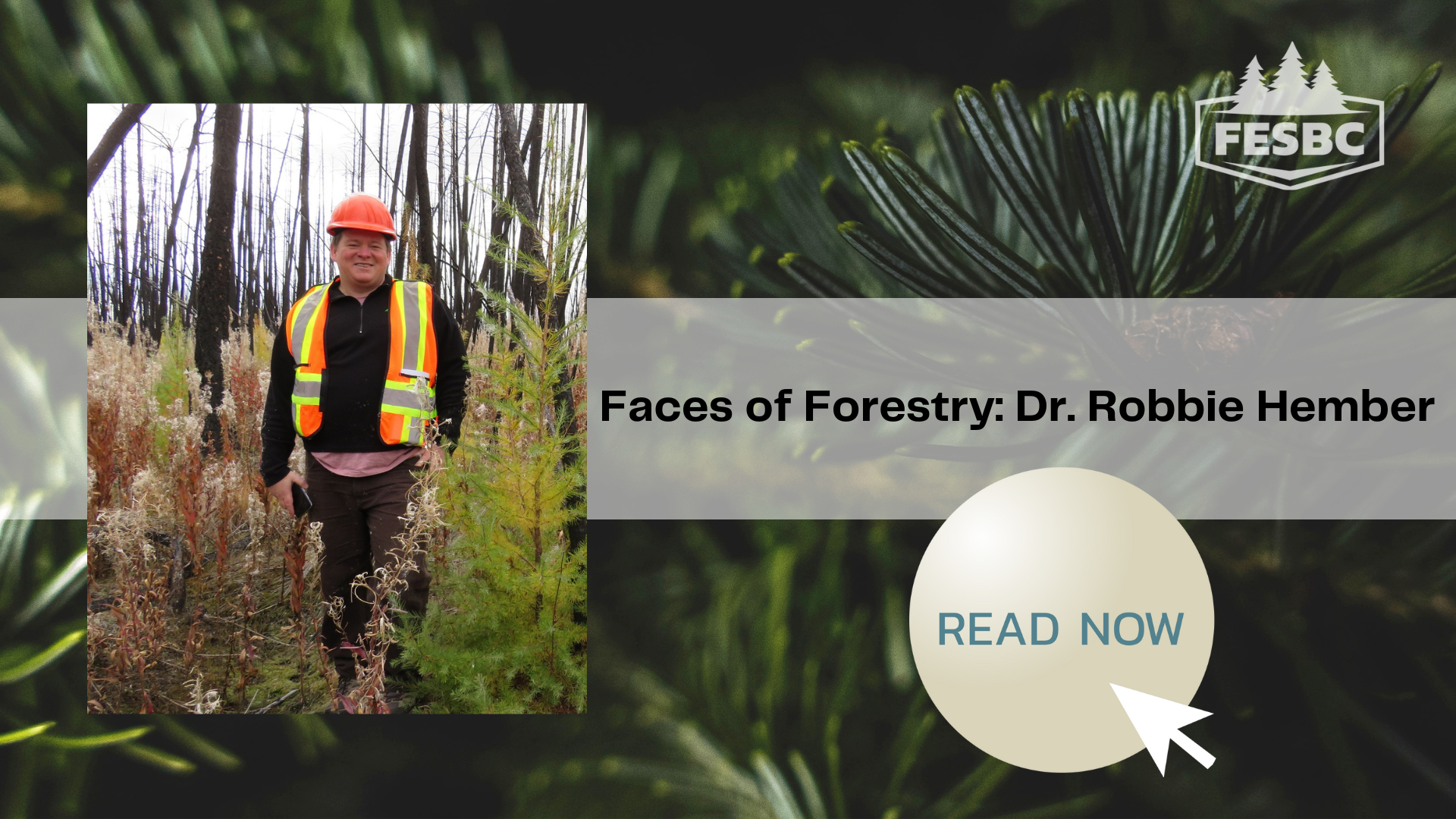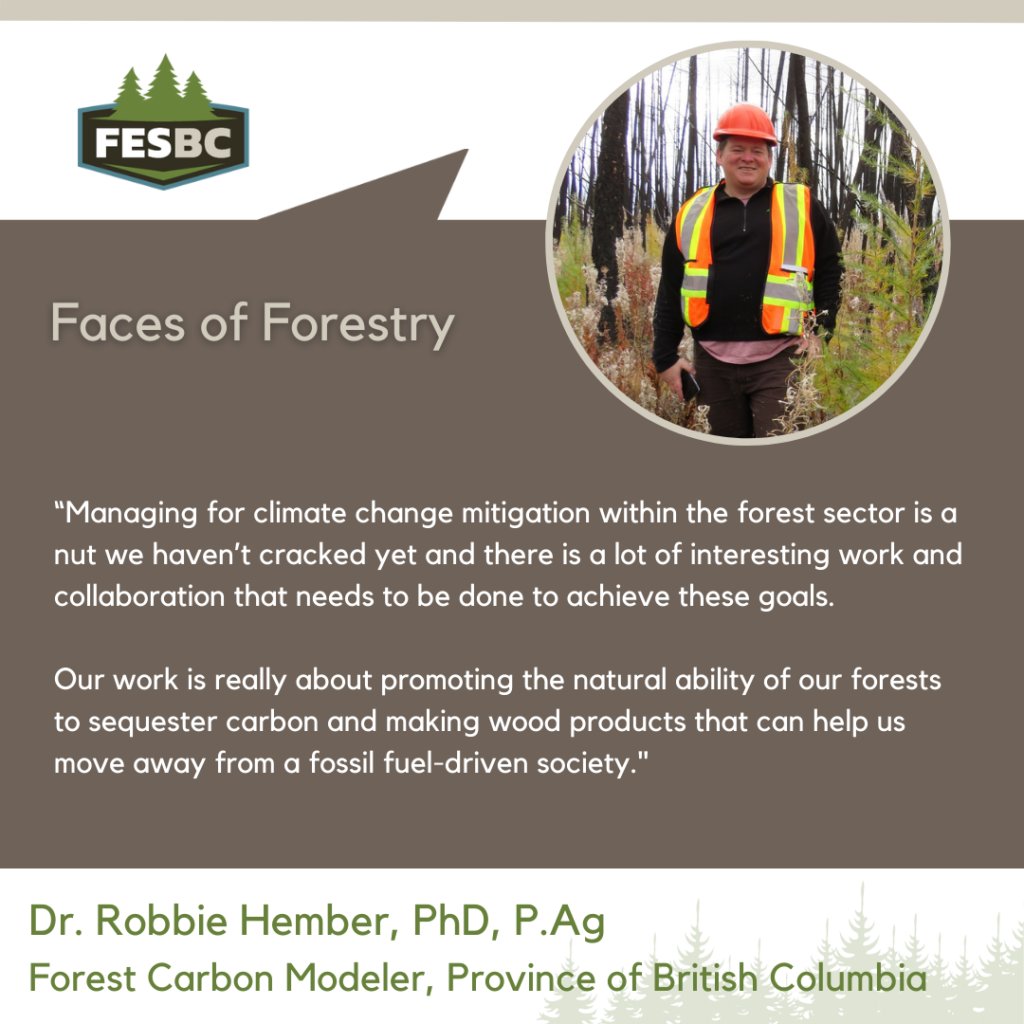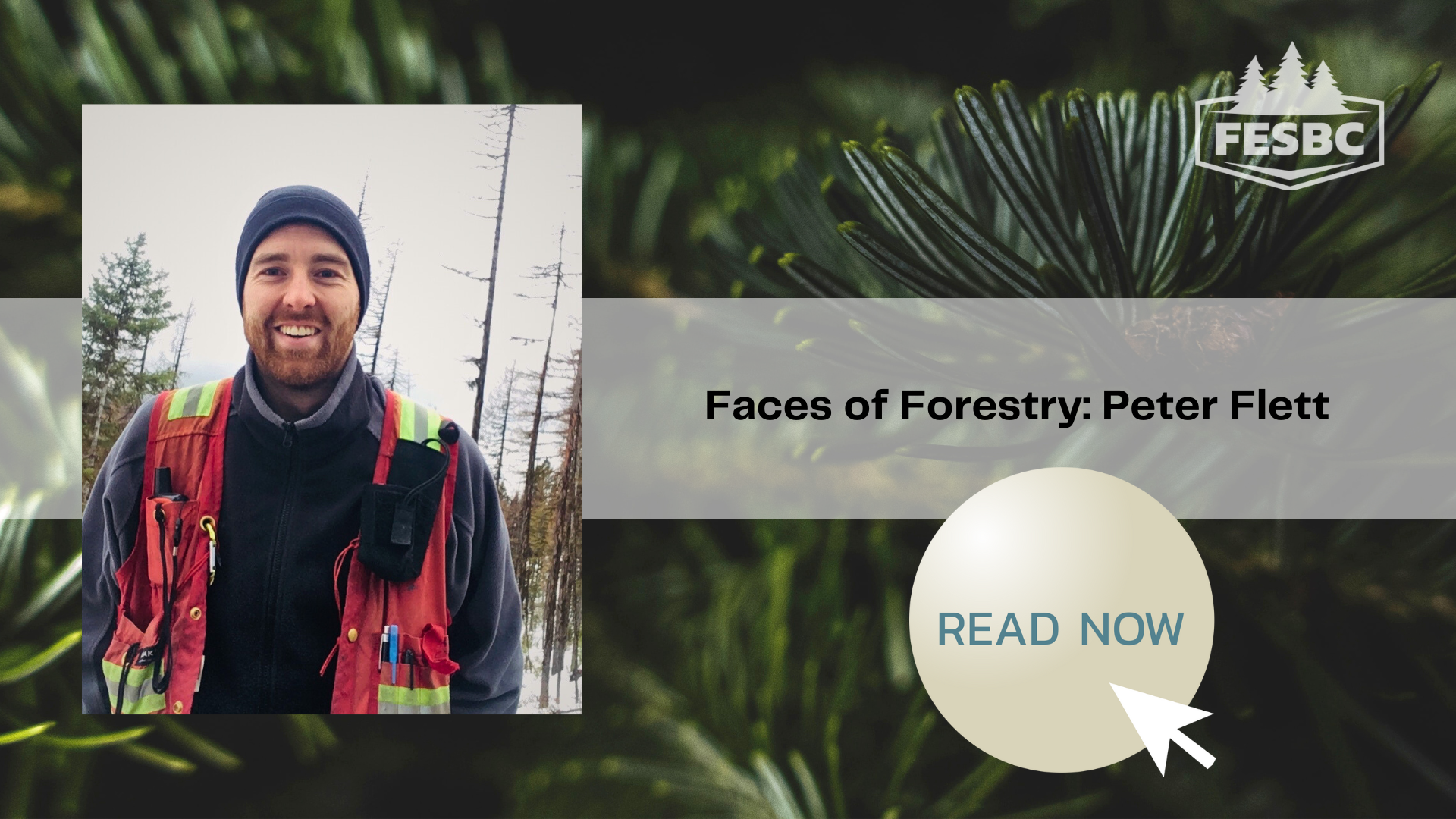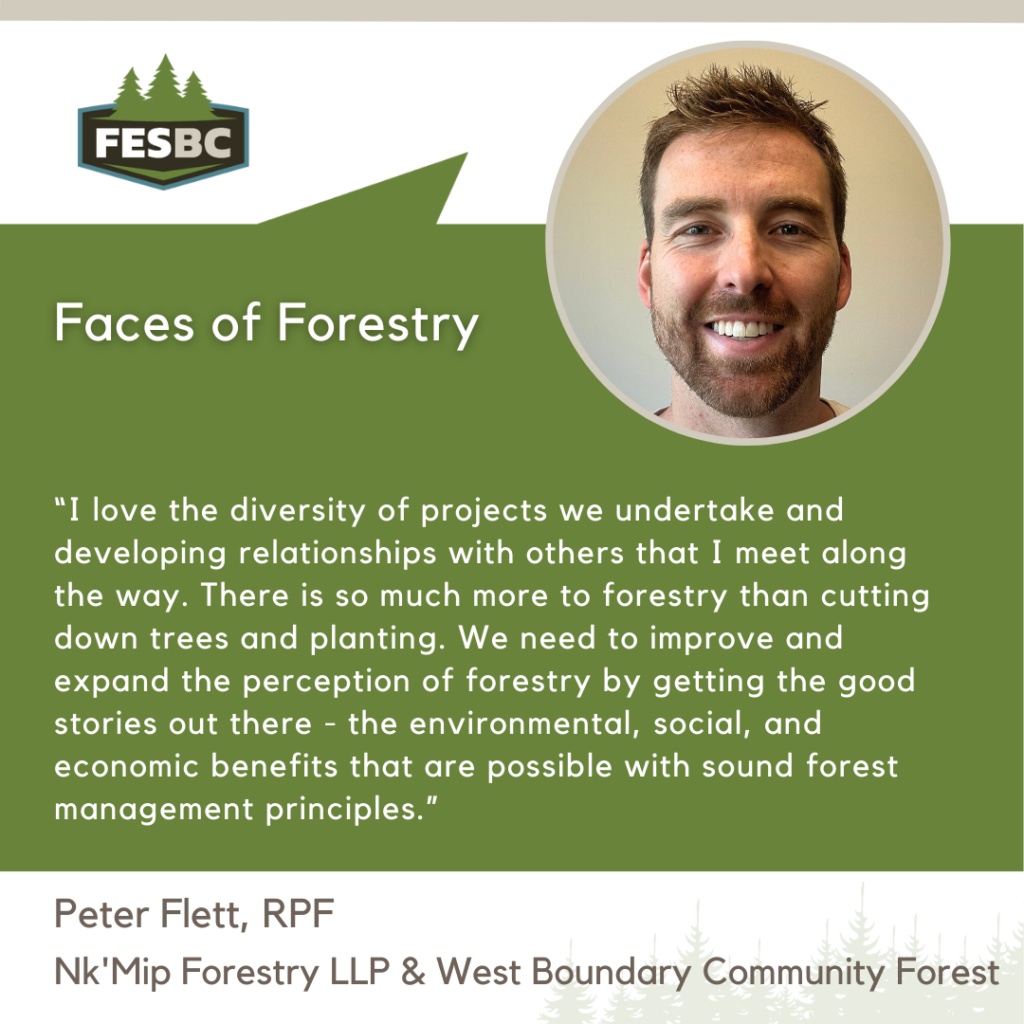Faces of Forestry is an initiative of the Forest Enhancement Society of BC (FESBC) to highlight people doing great work to enhance our forests throughout British Columbia. This month, we feature Brittany Dewar, a Registered Professional Forester and Forestry Project Manager at Westland Resources Ltd.
After getting her Bachelor of Science degree in Geography from the University of Victoria, Brittany began working in environmental consulting around Victoria and Calgary. After a few years, she decided to move back to British Columbia, settling in Terrace as she started her job at Westland Resources Ltd. in 2015.

At Westland Resources Ltd., a company specializing in natural resource consulting and management services for fish, forests and wildlife, Brittany had the opportunity to pursue a designation as a registered forester. Last December, she was able to complete her designation, becoming a Registered Professional Forester after a number of years spent gaining the necessary work experience and training.
“When I finally became a forester, it felt like a wonderful accomplishment,” said Brittany. “Had I known more about forestry when I was in school, I think I would’ve seriously considered that as my degree. I thoroughly enjoy the work I get to do every day and I am grateful for all the support I have received from my team.”
Currently, Brittany works as a Forestry Project Manager, helping manage small licensees in the district and performing operational and strategic planning as well as other advisory forestry work. Additionally, she also spends some of her time out on the field, performing ecosystem mapping and silviculture work.
“Even though I don’t get to do it that often, reconnecting with the trees and ecosystems is one of the best parts of my job. That is where it all starts for many foresters,” noted Brittany.
Westland Resources Ltd. has been working with FESBC since 2017, collaborating on diverse projects around carbon emission reduction and fibre utilization.
“The first project I helped with was a research-based project on what could be done at the site level to manage carbon. The research work was important to understand how operations and policy that guide operations can change to provide carbon benefits,” said Brittany.
For the past three years, Brittany has been the main administrator of various fibre utilization projects with FESBC, helping put together applications and reporting on behalf of the licensees.
“Fibre utilization has been extremely important for our region in general, as well as for the forest licensees we work with. We have really high percentages of pulp fibre in our stands but it’s hard to find a place where that can easily go,” she noted. “FESBC has been crucial in preventing this fibre from getting wasted and burned, overall making better utilization of our forests which is important for the sustainability of our local logging industry, as well as for the benefits it has for emission reductions.”
Throughout her career, Brittany has appreciated the diversity within her role and encourages young people to take an interest in the forestry industry, as she believes it is a career that can make a real difference in the community and on the landbase.
“Forestry is great because it’s a diverse career path. We need to carefully consider the potential impacts of forestry operations on everything within the landscape, from wildlife to fish to cultural values,” she expressed. “There are numerous job opportunities in B.C., and a career in forestry allows you to make a tangible difference in managing our resources.”
Thank you, Brittany, for your dedication to managing our forests, promoting sustainability and enhancing resource utilization, all contributing to the betterment of our forests and communities.

